Robotics Education Journal
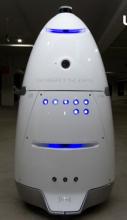 07/13/2016
07/13/2016 As reported by Mishtalk.com, UBER has shown a new security guard robot that will be greeting visitors to the company's inspection lot in Mission Bay, in San Francisco. Interestingly, there are now several companies using and/or working on this category of robot, which will patrol warehouses, greet people at hotels, mind parking lots and the like.
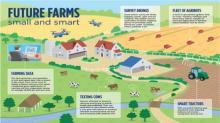 07/12/2016
07/12/2016 “Forecasts for the worldwide agribotics market predict a whopping increase from $3 billion in 2015 to $16.3 billion by 2020." So Tom Green notes at the beginning of a fascinating podcast on agribotics, in which he interviews Frank Tobe of TheRobotReport.com. "The world’s population is expected to hit more than 9 billion by 2050. That’s a lot of mouths to feed. To grow all that food, the world’s farms will need to increase production by around 25 percent". This podcast, highly recommended, explores the various ways—some surprising—robotics technology will be used to feed the world in coming years.
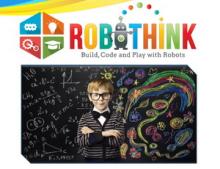 07/12/2016
07/12/2016 RoboThink is a premier STEM edu-tainment (education + entertainment) provider whose offerings are gaining popularity because of their innovative and effective project based K-9th grade robotics, coding, engineering and math curriculum. These programs nurture critical thinking, visual problem solving and fine motor skills, teamwork, communication skills, goal oriented persistence and process-oriented thinking and abstract thought.
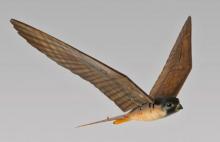 07/11/2016
07/11/2016 Robird passed validation trials, permitting its use at the Farnborough Airshow, being held now and for the next several days in England. The robot peregrine falcon, and a larger bald eagle version, mimic the ability of real birds of prey to clear the skies of birds in their hunting areas -- which the fleeing birds learn to avoid.
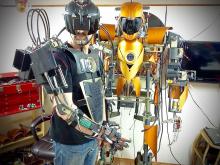 07/11/2016
07/11/2016 Pierre Bouchard has been working on a full-size mechanical humanoid for some years and we have reported various updates in periodic news stories. In the last six months, Pierre has concentrated on a new exoskeleton that he wears and from which he can control the head and camera view of the J.A.R.R.V.I.S. humanoid.
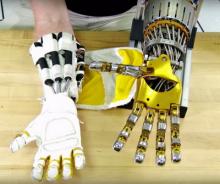 07/09/2016
07/09/2016 For over 50 years, scientists and engineers at NASA’s Johnson Space center have pioneered technology breakthroughs in computing, medicine, thermal materials, systems engineering and more. These patented technologies are available through licensing agreements to enable entrepreneurs to create new products. NASA and general motors developed Roboglove as a spin-off technology from Robonaut. It uses Robonaut derived actuation and an external battery power supply. The glove is intended to assist humans performing repetitive tasks that require significant hand strength for gripping, pulling levers, lifting heavy metal objects and the like.
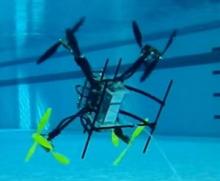 07/08/2016
07/08/2016 A two-tiered propeller system has solved the problem of transitioning from water to air and vice versa, enabling this “Naviator” hybrid to explore the depths of a body of water, then fly back to a ship or land base. The new design is only a tethered prototype, and its designers note that one of the challenges they face is scalability. Enabling larger versions to carry a meaningful payload that can perform work is a challenge, but it’s just a matter of time until this has been met.
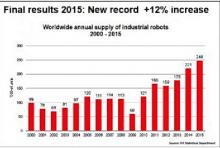 07/06/2016
07/06/2016 Five emerging trends in robotics point to the shape of things to come across all of automation. These emerging trends deserve the attention of roboticists everywhere. As identified by respected industry commentator, Frank Tobe of TheRobotReport.com, these are (1) China's appetite to acquire and build an in-country robotics industry, (2) Collaborative robotics, which are beginning to impact the overall industry, (3) Robotics-as-a-Service (RaaS), now emerging in multiple verticals, (4) The impact of new robotic tech in logistics and material handling, and (5) the continued solid interest in investing in robotics.
 07/01/2016
07/01/2016 Reporting from InsideUnmannedSystems.com, Vicki Speed offered a snapshot of the first planned implementation later this summer of drones autonomously flying urgently needed medical supplies to remote sites in Western Rwanda, Africa. 20 hospitals and health care centers will start receiving blood shipments. A California-based robotics company, Zipline, is organizing the project. Zipline CEO Keller Rinaudo noted, “We’ve built an instant delivery system for the world, allowing medicines and other products to be delivered on demand and at low cost, anywhere.”
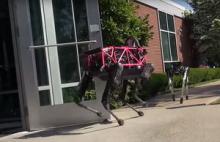 06/24/2016
06/24/2016 SpotMini is a new smaller version of the Spot robot by Boston Dynamics, weighing 55 lbs dripping wet (65 lbs if you include its arm). SpotMini is all-electric (no hydraulics) and runs for about 90 minutes on a charge, depending on what it is doing. SpotMini has remarkable agility and can squeeze through relatively tight spaces, as is shown in the video.
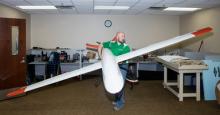 06/23/2016
06/23/2016 With the release of relatively unrestrictive commercial drone regulations by the FAA, drone development firms have flocked to North Dakota to test, fly and refine prototypes for use in a wide variety of still emerging applications. At the Grand Forks Air Force Base, an instructor prepares to discuss the SandShark UAV. Photo courtesy of Tim Gruber, NY Times.
 06/21/2016
06/21/2016 Today, the Department of Transportation’s Federal Aviation Administration has finalized the first operational rules (PDF) for routine commercial use of small unmanned aircraft systems (UAS or “drones”), opening pathways towards fully integrating UAS into the nation’s airspace. These new regulations work to harness new innovations safely, to spur job growth, advance critical scientific research and save lives.
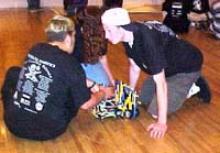 06/21/2016
06/21/2016 The NASA index of robotics curricula represents all grade levels from K12 through graduate studies. The Educational Robotics Matrix not only lists out robotics curricula by name, with descriptive sentences and links, but also specifies curricula-related competitions and even sources of internships and job leads.
 06/20/2016
06/20/2016 ROBOTC is one of the very best time-tested, in-depth packages combining programming environments and curricula for VEX, VEX-IQ, VEX CORTEX AND LEGO MINDSTORMS learning systems. CMU has provided a remarkable Virtual Worlds component that allows programming in online worlds, and even the capability of creating a custom online world for students’ use. Moreover, this package includes a Virtual Brick option that looks and acts like the real thing working with NXT-G, EV3 and LABVIEW for LEGO MINDSTORMS software.
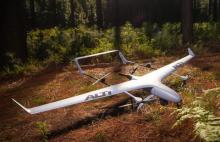 06/19/2016
06/19/2016 In a mid-June post on Techcentral.co.za, Regardt van der Berg reported on a new South Africa-made drone that is an eye-catcher and that seems to solve multiple problems in an integrated design. Alti, a division of SteadiDrone, has produced the Transition, a multi-rotor, fixed-wing aircraft that takes off vertically using electric power and flies horizontally using a fuel-powered 20cc four stroke engine.
 06/18/2016
06/18/2016 In a release by CMU spokesperson Byron Spice, it was announced that CMU’s Takeo Kanade, the U.A. and Helen Whitaker University Professor of Robotics and Computer Science at Carnegie Mellon University, won the prestigious 2016 Kyoto Prize for Advanced Technology. Kanade was cited for his pioneering contributions to computer vision and robotics. The international award is presented to individuals who have contributed significantly to the scientific, cultural and spiritual betterment of humankind. In a pioneering career, Kanade has made fundamental discoveries in face detection technology, automated driving, three-dimensional image reconstruction, self-flying helicopters and the use of video images to estimate the direction and speed of moving objects, among many other areas.
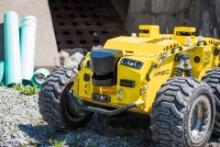 06/17/2016
06/17/2016 The academic institutions providing talent for the exploding robotics markets face volatile times as when, in the case of Carnegie Mellon, UBER recruited a raft of CMU specialists, about a year ago, to establish the Uber Advanced Technologies Center in Pittsburgh. However, institutions quickly bounce back. Carnegie Mellon University’s Robotics Institute has expanded and by last fall had more graduate and undergraduate students – 410 – than at any time in its history.
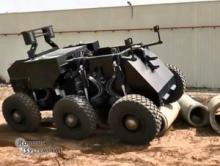 06/17/2016
06/17/2016 Engineering Newswire just reported on a new Israeli all-terrain autonomous and remotely operated military robot with interchangeable modules that can be adapted for various deployment scenarios. Called the Pitbull, the Israeli newcomer is vaguely similar to an all-terrain vehicle, Crusher, fielded years ago at Carnegie Mellon University.
 06/16/2016
06/16/2016 The NREF is beginning a new series that identifies some outstanding examples of classroom robotics programs. Our first report centers on Maine Robotics, www.mainerobotics.org, an organization founded in 2004 to support the training of mentors and teachers, as well as students, in a variety of robotics related competencies to further develop STEM skills and technical interests in Maine. MAINE ROBOTICS involves 1400 students a year.
 06/16/2016
06/16/2016 Countless computerized expert system applications will be emerging for legal and myriad other practice specialties in the exploding field of artificial intelligence (AI). Law firm Baker & Hostetler is part of the current trickle of such announcements soon to be a flood, and not just in legal practice, but across all domains of human professional endeavor.
 06/14/2016
06/14/2016 Tony Pilling, proprietor of this new robotics website, just announced his broad initiative and we wish him all success. ROBOSHACK is a place to express your passion about robotics and it is free and easy to become a member. The website, which spans news to how-to articles and more, is "for everyone to share information with a growing community worldwide."
 06/13/2016
06/13/2016 This library of video interviews, podcasts, book reviews, in-depth articles and more, all on artificial intelligence and the singularity – and closely related topics ranging from the history of blogging and the quest for immortality to science fiction embodiments of AI – is a treasure of information that we highly recommend.
 06/12/2016
06/12/2016 Authorizations to companies flying UAS (Unmanned Aerial Systems) by the FAA are climbing rapidly, with 5,309 authorizations granted as of June 12, 2016. The demand for airborne UAS applications has been unprecedented and rapidly mushrooming for a couple of years, now. Though authorizations are climbing, the delays felt by many individual applicants have been somewhat frustrating, on the ground.
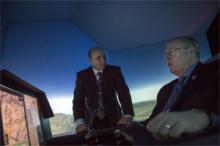 06/12/2016
06/12/2016 WarontheRocks.com reported that the Defense Department’s third offset initiative unleashes game-changing technology – and entrepreneurs with robotics products that fill the bill should take note. This technology development quest is to ensure military deterrence with respect to such potential adversaries as China and Russia, and has a budget of $18 billion.
